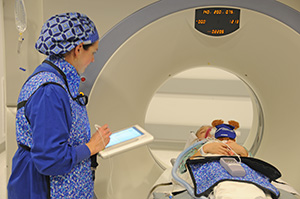Anesthesia practice is the last frontier for EMR adoption. Why?
I remember, 23 years ago, one of my mentors coming up behind me and asking “How can you give an anesthetic without looking at the patient?” The patient was draped, and I was vigilantly scanning the monitors, charting, and out of the corner of my eye, staring at a PC, cabled to the monitors, gathering dust. An early AIMS system.
 Anesthesiologists have always been ahead of the technology curve, and advances in hemodynamic monitoring have brought unprecedented patient safety. That dusty PC was just an outgrowth of the same desire to improve care. The idea that we could collect and store all of the anesthesia and hemodynamic data in real-time, HAD to be of great benefit. Think of the research possibilities. Think of the accuracy of the record. But instead of improving care, it took us away from our patients. The technology was slow and rudimentary. You had to manually enter all of the patient demographics, and meds. Vital sign errors were time consuming to edit, and if you couldn’t type, you were way behind the curve. The user interface was a disaster. The systems were unreliable, and room turnovers were glacial. Surgeons balked, hospitals balked, dollars were wasted and systems gathered dust.
Anesthesiologists have always been ahead of the technology curve, and advances in hemodynamic monitoring have brought unprecedented patient safety. That dusty PC was just an outgrowth of the same desire to improve care. The idea that we could collect and store all of the anesthesia and hemodynamic data in real-time, HAD to be of great benefit. Think of the research possibilities. Think of the accuracy of the record. But instead of improving care, it took us away from our patients. The technology was slow and rudimentary. You had to manually enter all of the patient demographics, and meds. Vital sign errors were time consuming to edit, and if you couldn’t type, you were way behind the curve. The user interface was a disaster. The systems were unreliable, and room turnovers were glacial. Surgeons balked, hospitals balked, dollars were wasted and systems gathered dust.
How far have we come in 2 decades? Well, most of the AIMS systems are somewhat more reliable. They have become a bit faster as surgeon/procedure templates have become the norm. They are still expensive to install and maintain, still slower than paper, and for the most part, still keep us chained to a gas machine. It is not that we don’t want something better, but the technological approach has not been available. Sub-optimal solutions are being forced upon us to meet Federal EHR mandates.
Can advances in connectivity, tablet technology, and cloud computing allow us to totally re-think the AIMS system? It needs to meet the demands of an anesthesia practice in 2012, capable of performing anesthetics in remote locations, imaging centers, surgical centers and physician offices; fast, intuitive, reliable, and able to provide data metrics.
Graphium Health’s mobile virtual paper approach will allow us to speed throughput, go almost anywhere, contain costs, mine useful data, and give us a meaningful anesthesia record. Most importantly for me, it will allow me to spend less time interfacing with the record, and more time focused on my patient. My mentor had the right idea 2 decades ago, and the technology has finally arrived to make it possible.

